Collected by Webdesigner Depot
 We’ve put together a collection of magazine covers that have stirred up controversy through the years.
We’ve put together a collection of magazine covers that have stirred up controversy through the years.
These covers can serve as object lessons for what to do and what not to do both with design and editorial.
While some controversial covers have worked and sold more magazines, or won awards for the editors who made the decision to go to press with them, others were embarrassments that the publication had to either apologize for, or fire an editor over.
Here are some of the most controversial magazine covers of all time. Feel free to suggest other covers that you think should be part of this collection.
Time Magazine, January 2, 1939: Hitler as Man of the Year
This cover featured an elaborate illustration of Hitler playing “his hymn of hate in a desecrated cathedral while victims dangle on a St. Catherine’s wheel while the Nazi hierarchy looks on.” Baron Rudolph Charles von Ripper was a Catholic that fled Hitler’s Germany, and the artist of this disturbing piece. By 1938, Hitler had firmly seized power in Germany, taken over Austria and Czechoslovakia, and had been given a free hand in Eastern Europe by the English prime minister of the time, Neville Chamberlain. Time has had to defend this choice throughout history, and at the time defended it by stating that the “Man of the Year” was a title bestowed on the person who had most influenced events of the previous year.
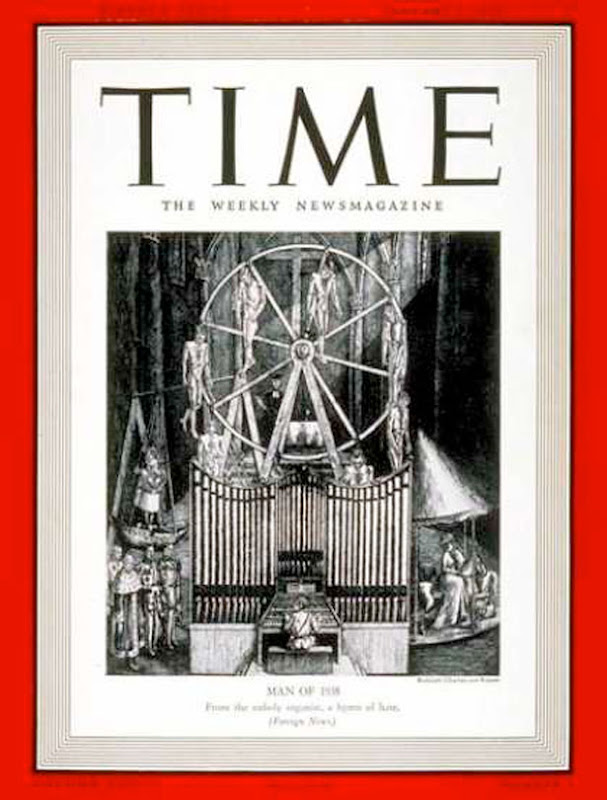
Time Magazine, April 8, 1966: Is God Dead?
This cover has been called the most controversial of all time. The related article concerned the “death of god movement” that had sprung up in the 1960’s. The cover and article enraged readers.
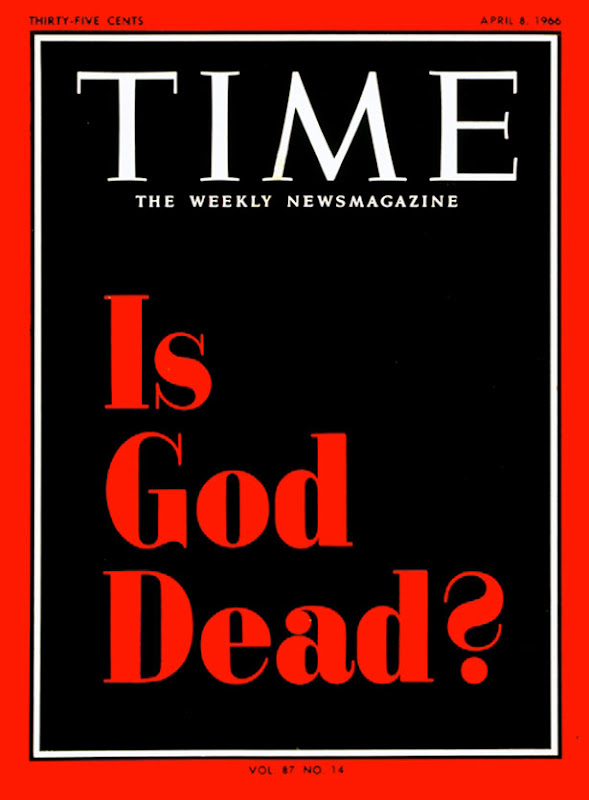
Life, November 26, 1965: War In Vietnam
Paul Schutzers captured this arresting image of a VietCong prisoner being taken prisoner by American forces during the Vietnam War. Photography and news coverage like this helped to turn the American public against the Vietnam war. While Schutzers was one of LIFE’s best photographers, he was killed on assignment during the Six-Day War of 1967 between Israel and its neighbouring states of Egypt, Jordan, and Syria.

Esquire, April 1968: The Passion of Ali
This smart rendition of Muhammad Ali was created to illustrate his martyrdom to his cause after he refused to join the US military due to his religious beliefs and was subsequently stripped of his heavyweight boxing title. The piece was done after the same manner as “The Martyrdom of St. Sebastian”, a popular theme through medieval art but most recognizable in the painting by Andrea Mantegna.
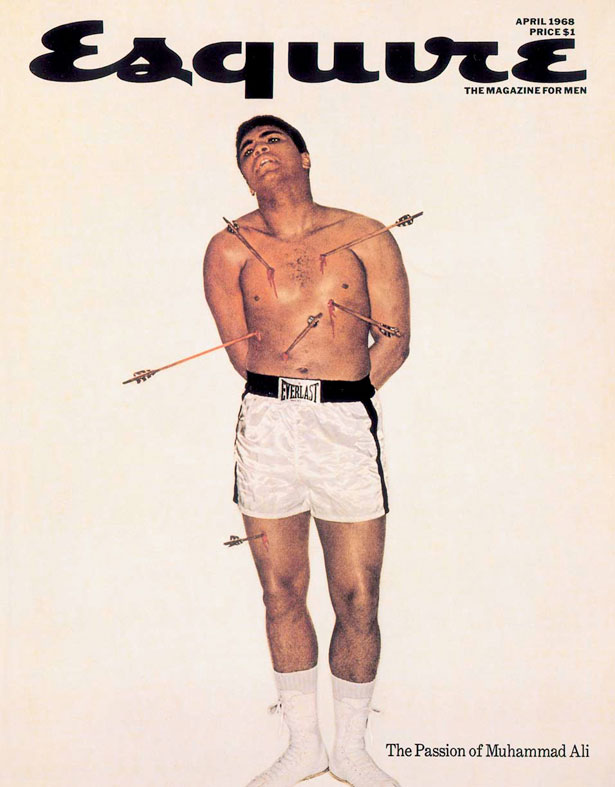
Esquire, May 1969: The Drowning of Andy Warhol
Another triumph of Esquire’s former visionary Art Director, George Lois, this picture combined two separate shots of a soup can and Warhol. In the first ten years of his employment at Esquire, circulation was boosted from 500,000 to 2 million, a figure for which his covers were partially responsible. This shot references Warhol’s famous “soup can” exhibits that symbolized the American avant-garde art movement.
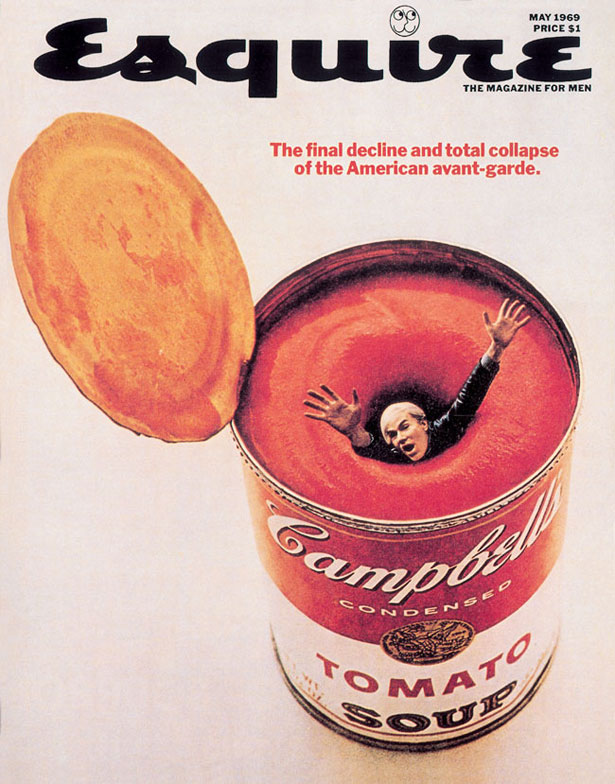
Playboy, October 1971: First Playboy African-American Woman
This cover was the first Playboy cover to feature an African-American woman. The model is Darine Stern and the photographer was Richard Fegley.
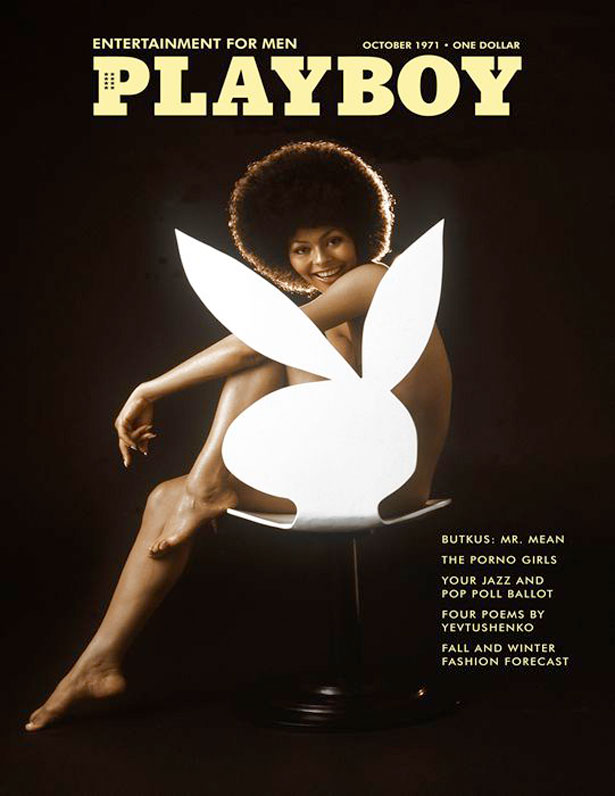
National Lampoon, January 1973: If You Don’t Buy This Magazine.
While this cover didn’t do much more than make people laugh when it came out despite its violent overtones, Ronald G. Harris’ famous cover shot definitely raised a few eyebrows in pre-Photoshop days.
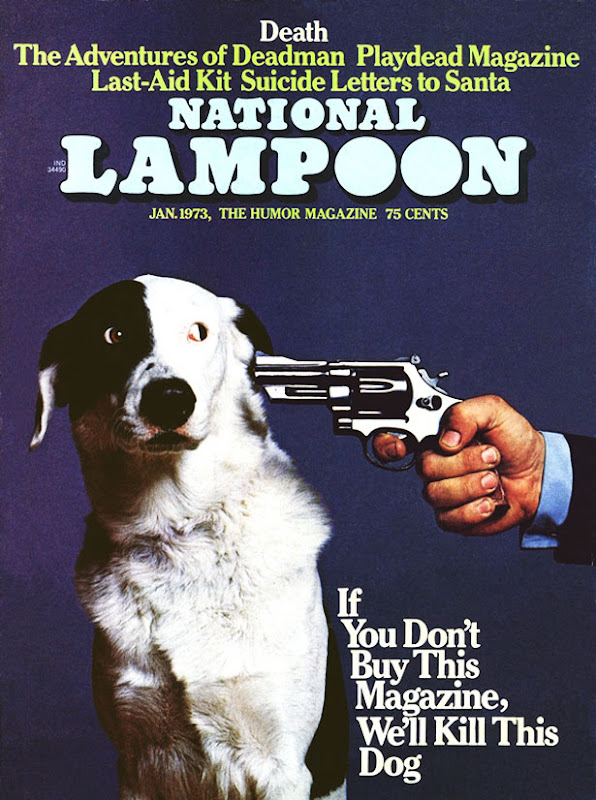
The New Yorker, March 29, 1976: Steinberg Map of New York
This portrayal of a New Yorker’s idea of what the rest of the United States looks like was drawn by Saul Steinberg. The artist sued Columbia Pictures over their movie poster for “Moscow on the Hudson”, which does seem to be derived from Steinberg’s cover down to the placement of the title. Steinberg won the case.
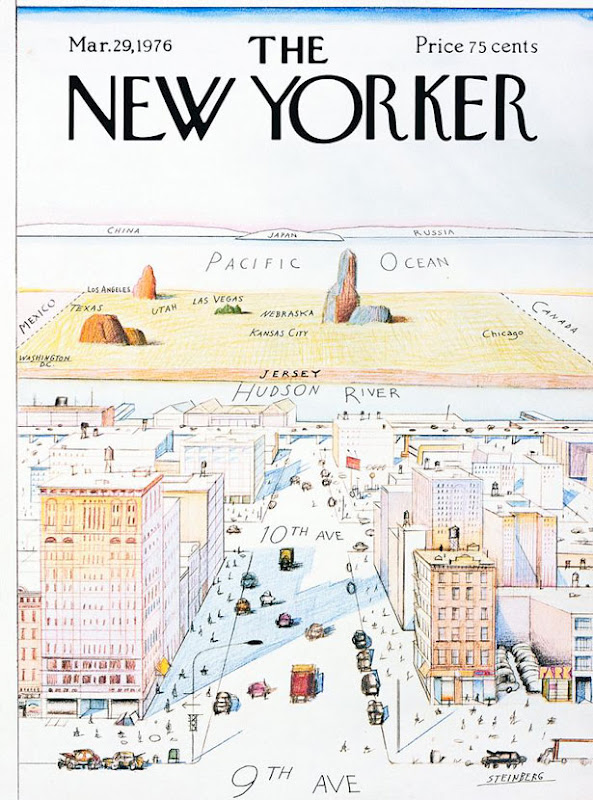
Rolling Stone, January 22, 1981: John Lennon and Yoko Ono
Annie Leibovitz took this shot just hours before John Lennon was shot outside of his apartment building, the Dakota, in New York City on December 8, 1980. Leibovitz originally wanted to take the shot of Lennon alone but he insisted that his wife be in the pictures. This cover was named the most popular magazine cover of the past 40 years by the American Society of Magazine Publishers.
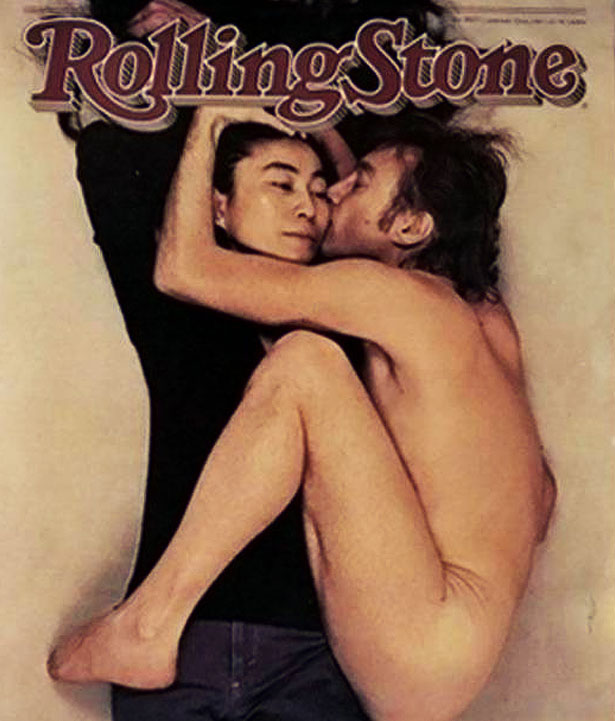
Vanity Fair, August 1991: Demi Moore, Pregnant and Nude
This cover was shot by celebrity photographer Annie Leibovitz and was decried as shameful and disgusting when it was released. Some stores sent back the issue, or only sold it with a brown paper covering the “offensive” image. It has spawned countless celebrity nude pregnancy shots done in the same fashion, and helped to launch Demi Moore’s career into the stratosphere.
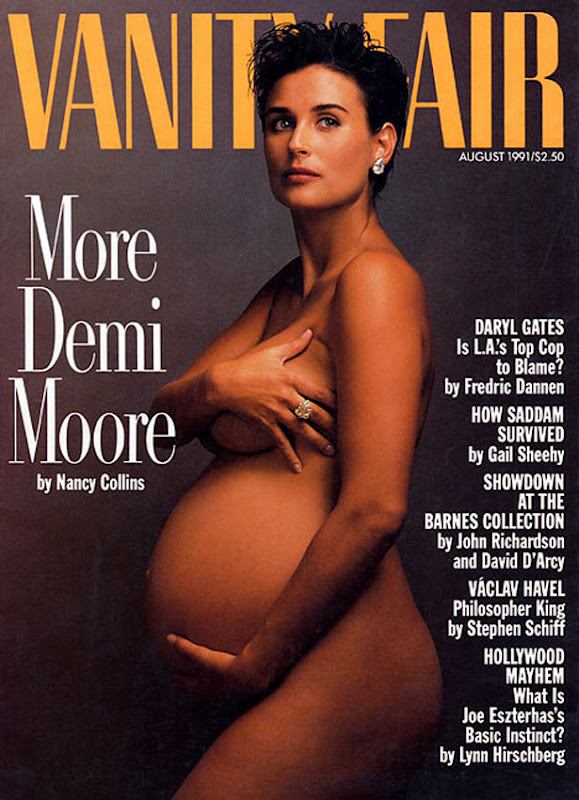
Vanity Fair, August 1993: K.D. Lang and Cindy Crawford
The cover was meant to be as controversial as the country star’s career. According to the cover story, Lang got more grief from the country music industry over her decision to join PETA than her decision to come out as a lesbian.
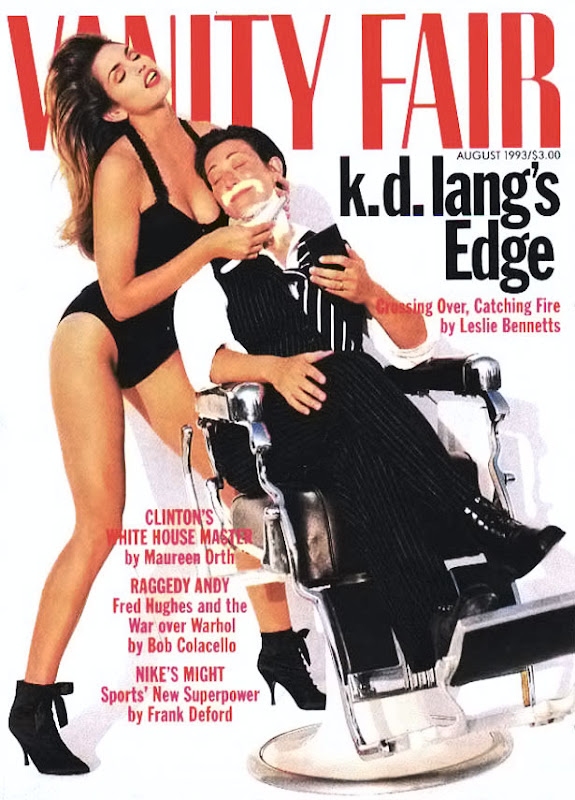
Time Magazine, June 27, 1994: OJ Mug Shot Controversy
In 1994, OJ Simpson was accused of murdering his wife, Nicole. In 1995, he was acquitted after a long and highly publicized trial. The photo used on the cover of Time Magazine was manipulated to make OJ look darker in skin tone and more menacing. For comparison, see the Newsweek cover which uses the original shot without any alteration.
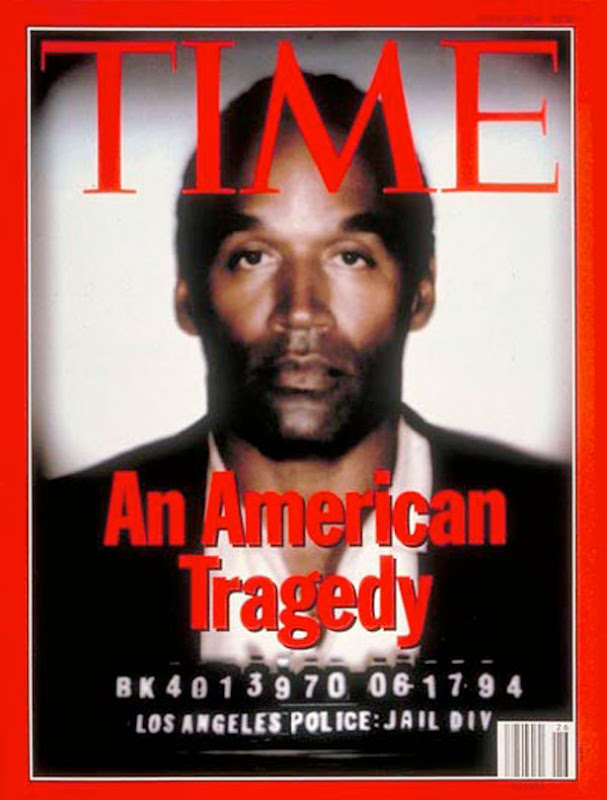
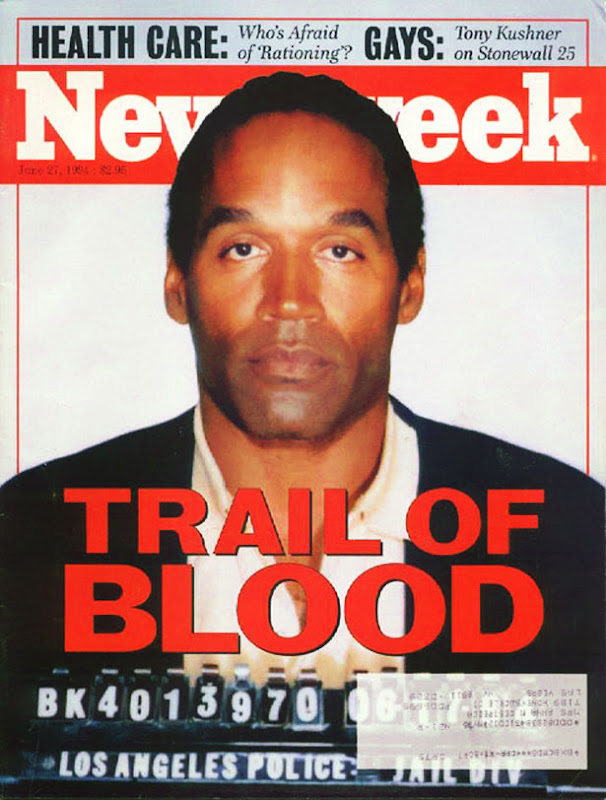
The Economist, September 10, 1994: The Camel-Humping Issue
Obvious Black Eyed Peas references aside, this cover drew some fire for the UK-based magazine. The cover was printed for the North American market only.

Time, April 14 1997: Ellen’s Coming-Out Issue
Time’s cover and exclusive story left no doubt in the minds of all Americans that Ellen was, in fact, gay. Even in 1997, coming out could be perilous for a star’s career. While it may now seem like a mere bump in the road due to Ellen’s stunning success, at the time TV outlets in rural America pulled her show.

Wired, June 1997: 101 Ways to Save Apple
When this magazine went to press, Steve Jobs had just rejoined Apple through Apple’s acquisition of his NeXT Software Inc. While the cover was a bit more pessimistic than the story it was meant to illustrate, it remains one of the top magazine covers of all time. We don’t think anyone would try to give Jobs advice today, but back then Mac fans would have done anything they could to help the ailing corporation.

Time, Dec 21, 1998: Devil Horns on Clinton
This was one of several magazine covers that featured Bill Clinton during the Monica Lewinsky scandal. In 1995, Lewinsky was an intern at the White House during Clinton’s presidency, and they had an intimate affair. The scandal broke when Lewinsky confided in a colleague in January of 1998. The scandal eventually resulted in Clinton’s impeachment. The top of the letter “M” in the Time masthead appear to be resting on the top of Clinton’s head as horns. The devil horns were written off by Time as an accident of masthead placement rather than a deliberate act.
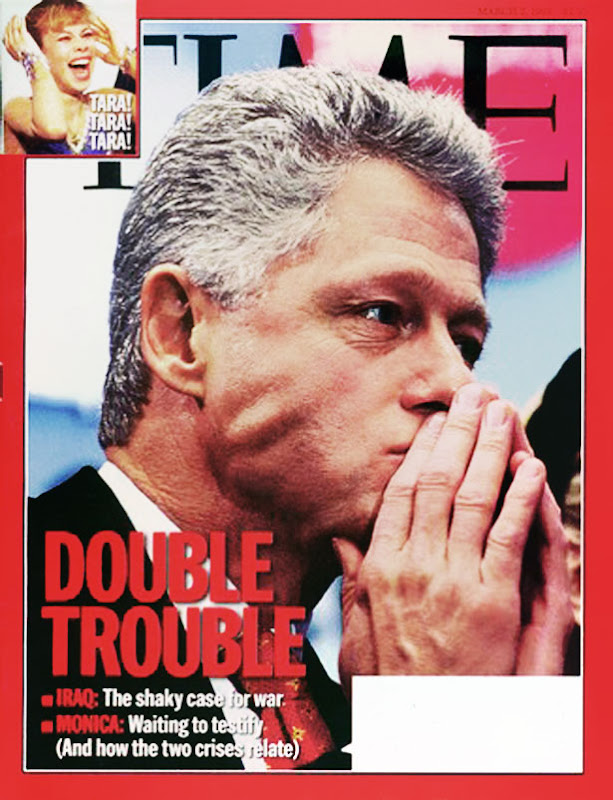
Esquire Magazine, December 2000: The Crotch Shot
This shot of Clinton was said to be inspired by the Lincoln Memorial, but was interpreted as an obvious reference to the Monica Lewinsky scandal. Like the Obama couple satire in the New Yorker seen further down, this cover drew fire from both sides of the political fence.
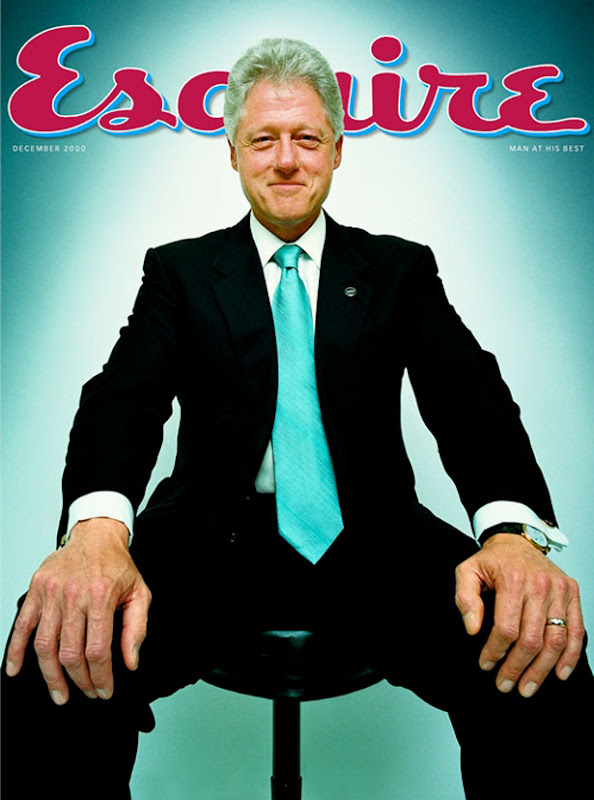
The New Yorker, Sept. 24, 2001: Twin Towers in Silhouette
This cover was a graphical as well as an editorial success. The magazine succeeded in creating a fitting and classic memorial to the victims of the tragedy and the buildings themselves in true upscale New Yorker fashion. Covers editor Franoise Mouly created a testament to the Twin Towers that drew on the inspiration of Ad Reinhardt’s black-on-black paintings.

Entertainment Weekly, May 2 2003: Dixie Chicks
The Dixie Chicks set off a firestorm when they criticized then-president George W. Bush for invading Iraq on the grounds that Iraq was manufacturing weapons of mass destruction. The Dixie Chicks used their weapons of mass distraction on this provocative cover.
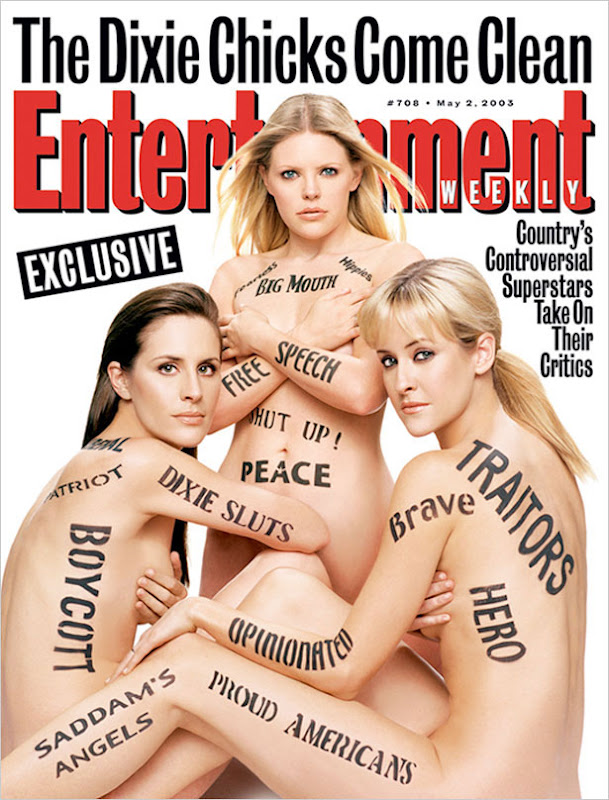
Seventeen, May 2003: Sarah Michelle Gellar’s Zombie Arm
This horrendously manipulated stock photo of Sarah Michelle Gellar made the mag send an expensive purse by way of apology. Gellar returned the purse since she didn’t wear leather. While the practice of using stock photos for covers is common, flagrant abuse of Photoshop is something that the art department and editor usually catch before print time.

Rolling Stone, January 2006: The Passion of Kanye West
Rolling Stone tipped a thorny hat to Esquire’s portrayal of Ali with this 2006 cover. It isn’t known if the cover was meant to be a joke about the singer’s ego, but most people found it very funny. Religious fans of the magazine didn’t find it as hilarious, and the odd cover story that went with it in which the singer admits to a porn addiction just made the whole thing awkward. The tone of the cover feels current in light of the singer’s recent mike-grabbing moment at the 2009 VMA’s.

Baby Talk, August 2006
While this image seems benign to most people who have been involved with a baby in one fashion or another, the cover was decried as obscene. Even though moms made up the target demographic, a survey of 4000 of them turned up the fact that 25% had a negative response. One mother actually shredded the magazine so that her 13-year old son couldn’t see it. Not that he likely noticed; he was probably on the computer downloading porn watching tips from Kanye.

Texas Monthly, January 2007: Dick Cheney Cover Issue
Building on the famous 1973 Lampoon cover, Texas Monthly took a jab at the Vice-President’s hunting accident where he shot a colleague in the face. This cover won the 2007 Best Cover Line of the Year Award from the Magazine Publishers of America.

Time, August 29, 2007: Devil Horns on Billy Graham
The blogosphere was rife with rumours about this cover. This was probably not intentional. Time Magazine has claimed that all of its “Devil Horn” covers through the ages are mere coincidences. For a defense of the Time Magazine position, this blog post has a list of Time Magazine covers that have devil horns but no potential hidden meaning. Accident of their masthead design, or subtle editorial statement? You decide.
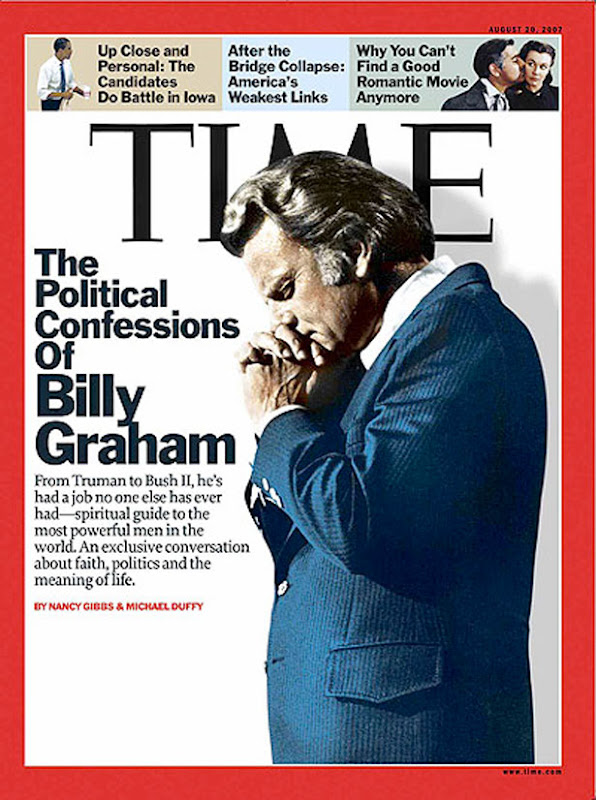
Golfweek, January 19, 2008: The Noose that Hung an Editor
This cover was born out of the comments of a golf anchorman, Kelly Tlighman, that fellow players should “lynch (Tiger Woods) in a back alley” and the subsequent feature story that was published in that edition of Golfweek. PGA Tour director Tim Finchem had this to say about it: “Clearly, what Kelly said was inappropriate and unfortunate, and she obviously regrets her choice of words, but we consider Golfweek’s imagery of a swinging noose on its cover to be outrageous and irresponsible”. A day after the cover was published, the editor was let go.

People Magazine, March 2008: Brangelina Twins
This cover and photo shoot sacrificed People’s editorial soul for a first shot at the Brangelina twins. Instead of their usual journalistic even-handed approach, they seemingly acquiesced to the couple’s need for nothing but positive coverage in order to get a scoop on the rest of the world with the first baby pictures. While People magazine denied these charges as “categorically false”, the coverage was nevertheless very rosy-cheeked in tone.

Vogue, April 2008: King Kong Cover
This cover of model Gisele Bundchen and sports star Lebron James was considered to be a racist portrayal of “King Kong”. Images that portray black males as threatening “reinforce the criminalization of black men,” said Damion Thomas, assistant professor in the Department of Kinesiology at University of Maryland. The cover was supposed to showcase two stars with excellent bodies, in keeping with the “Shape” theme of the issue.

The New Yorker, July 21, 2008: The Obama Couple Satire
This cover by famous New Yorker cartoonist Barry Blitt was heavily criticized by both the McCain and Obama camps during the 2008 US election. While the piece was meant to be a satire of allegations lobbed at the couple by their detractors, its inopportune appearance during a campaign didn’t have Obama’s supporters laughing as hard as the magazine intended.
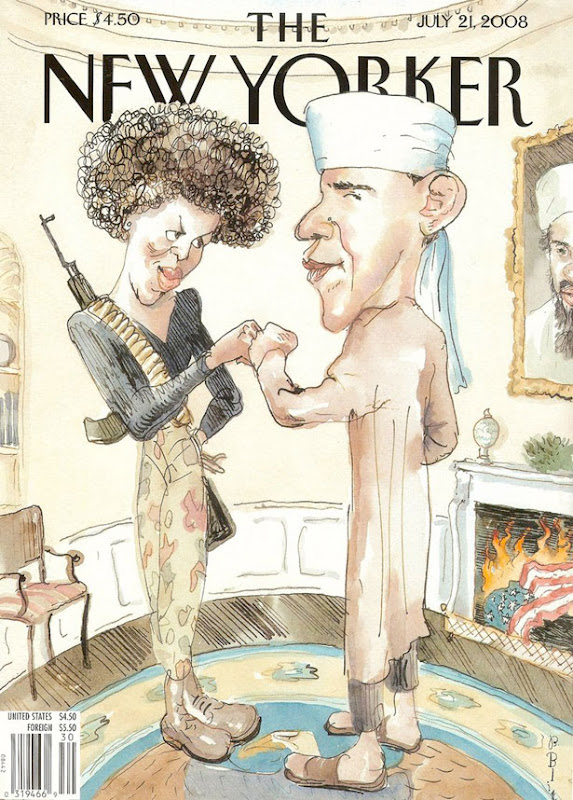
OK Magazine, June 2009: Michael Jackson Death Photo
Fans were upset over the magazine’s decision to publish this photo. Sarah Ivens, editorial director, said that the cover decision was made since they wanted to stand out from all of the tribute covers that were dominating the stands that week. Jackson died on June 25, 2009 after being given a cocktail of drugs by his physician.
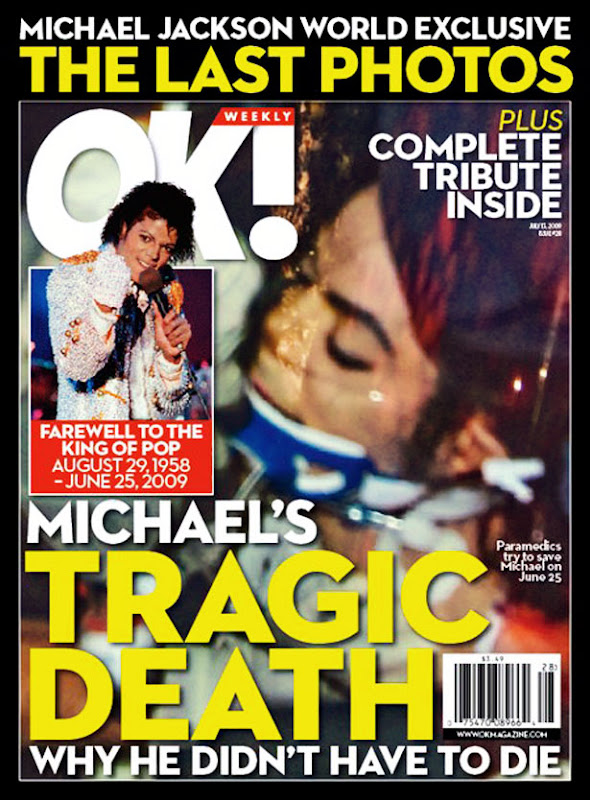
Compiled and written exclusively for WDD by Angela West.
Got a controversial magazine cover that rocked your world? Post a link below or send it to us and we’ll add it to this post.
1. Michel Onfray: “We do not need God”
2. Barack Obama: Peace with Waragenda in Afghanistan!
3. Black Jesus Christ save America with White Phosphorus Bombs in Iraq!
4. New Obamas Satelitswar in Afghanistan!
5. SWORDSWEAPONS, or ROBOTWEAPONS in Afghanistan!
6. Evangelical U.S. Churchs in Warpropagand in Internet!
7. SOCOM-Soldiers for Jesus Christ!
8. AIPAC-War in Gaza and Iraq!
9. AIPAC-Obama and U.S. Debts! ( 15 Mill. Imployments in California ).
Aggressiv, spaltend
Katholische Kirche attackiert Obama
© AP
Er sei “aggressiv, spaltend und apokalyptisch”: Der US-Kardinal Stafford übt scharfe Kritik am künftigen US-Präsidenten.
MEHR ZUR STORY
Im Oval Office
Obama droht E-Mail- und Handy-Verbot »
Der US-amerikanische Kurienkardinal James Francis Stafford – Kardinalgroßpönitentiar der katholischen Kirche – hat laut Kathpress scharfe Kritik am gewählten US-Präsidenten Barack Obama geübt. Am 4. November – dem Wahltag – habe Amerika ein “kulturelles Erdbeben” erlebt. Obama trete “aggressiv, spaltend und apokalyptisch” auf, so der Kardinal in Washington anlässlich eines Vortrag über die Päpste Paul VI. und Johannes Paul II. Die Kampagne Obamas sei gegen den Lebensschutz gerichtet gewesen.
Stafford sagte, die Zukunft unter Obama werde “der Agonie Jesu im Garten Gethsemane gleichen”. Staffords Äußerungen sind die bisher schärfsten eines Vatikanvertreters seit den Präsidentenwahlen vom 4. November. Benedikt XVI. hatte Obama zu seiner Wahl schriftlich gratuliert. In seinem Vortrag sagte der Kardinal, die Katholiken in den Vereinigten Staaten müssten zu den ursprünglichen Werten von Ehe und Familie und der menschlichen Würde zurückkehren.
Die Obamas besichtigen ihr künftiges Heim
Die Familie des designierten US-Präsidenten Barack Obama hat am Dienstag ihre neuen Wohnräume im Weißen Haus besichtigt. Auf Einladung von Laura Bush, der Frau des scheidenden Präsidenten, ließen sich Michelle Obama und ihre beiden Töchter Sasha und Malia durch ihr künftiges Heim führen.
Obama-Töchter machen Washington-Ausflug
Die zukünftigen “First-Kids"…
Begleitet wurden sie von Michelles Mutter Marian Robinson. Die beiden Kinder im Alter von sieben und zehn Jahren besichtigten in Washington auch ihre neue Schule.
Al-Kaida warnt Obama
Die islamistische Terrororganisation Al Kaida hat Barack Obama davor gewarnt, die Politik von Amtsinhaber George W. Bush fortzusetzen. Damit würde Obama scheitern, erklärte der Vize-Chef der Organisation Ayman al Zawahiri in einer am Mittwoch veröffentlichten Tonaufnahme. Zudem kritisierte er den Demokraten Obama wegen seiner Unterstützung für Israel und weil er sich von seinen muslimischen Wurzeln abgewandt habe. Al Zawahiri rief die Muslime auf, die “kriminellen USA” anzugreifen. Die Aufnahme wurde von dem amerikanischen SITE Institute veröffentlicht, das islamistische Medien überwacht.
Beschimpfungen als “Hausneger”
Der Stellvertreter von Osama bin Laden erklärte in dem Video, Obama sei das Gegenteil “ehrbarer schwarzer Amerikaner” wie der 1965 ermordete radikale Schwarzenführer Malcolm X.
Foto:(c) Reuters
Er bezeichnete Obama, den früheren Außenminister Colin Powell und die amtierende Außenminister Condoleezza Rice als “Hausneger”, wie den Untertiteln zu entnehmen war.
Der künftige Präsident werde die amerikanische Politik nicht verändern, erklärte Al Zawahiri weiter. Ziel sei weiterhin die Unterdrückung von Muslimen und anderen. Gezeigt wurden Aufnahmen von Reden von Malcolm X und von Obama mit einer jüdischen Kopfbedeckung. Al Zawahiri sagte, der Plan der neuen Regierung, Soldaten aus dem Irak nach Afghanistan zu verlegen, sei zum Scheitern verurteilt. Die Afghanen würden Widerstand leisten. Er drohte nicht mit konkreten Anschlägen, warnte jedoch, dass Obama einem Heiligen Krieg gegenüberstehe.